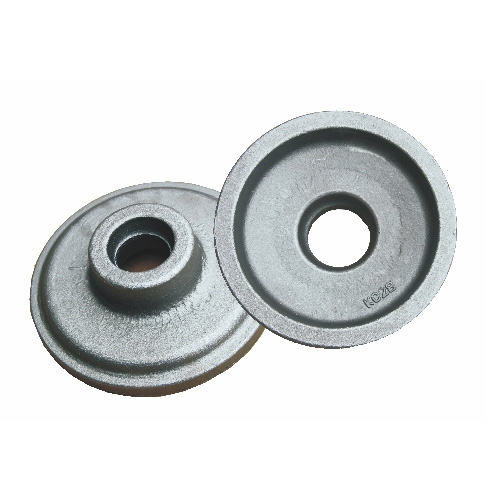What are the disadvantages of flame surface hardening of forgings?
2022-05-17
The high temperature flame produced by mixing gas and oxygen is sprayed to the surface of the forging, so that it is rapidly heated to the quenching temperature, and then a certain quenching medium is sprayed on the heating surface for quenching cooling method called flame surface quenching method.
Compared with induction heating surface quenching, flame quenching has the advantages of low equipment investment and simple operation. The method is flexible, it is not limited to the irregular shape and volume of forging and heating surface, and has strong adaptability. It is more convenient and flexible for single piece and small batch production.
Especially for local surface heating of large forging parts, it is difficult to design and manufacture with induction heating inductor. In addition, forging parts cannot be placed on the quenching machine, while flame surface quenching can fix forging parts and carry flame spray gun and nozzle for heating. The depth of hardened layer can be selected according to requirements.
Flame quenching, as a surface heating quenching method, especially for single small batch forging, is widely used at home and abroad. It still occupies a certain proportion in heat treatment methods, and is more widely used in Western European countries.
The shortcoming of flame surface quenching is that the quality control is closely related to the technical level of the operator. Because of the fluctuation of the gas source, it is difficult to adjust the constant and the automation is difficult. Use an explosive mixture of gases. Working conditions in the forge were poor. Extremely thin heating surfaces do not control heating.
Compared with induction heating surface quenching, flame quenching has the advantages of low equipment investment and simple operation. The method is flexible, it is not limited to the irregular shape and volume of forging and heating surface, and has strong adaptability. It is more convenient and flexible for single piece and small batch production.
Especially for local surface heating of large forging parts, it is difficult to design and manufacture with induction heating inductor. In addition, forging parts cannot be placed on the quenching machine, while flame surface quenching can fix forging parts and carry flame spray gun and nozzle for heating. The depth of hardened layer can be selected according to requirements.
Flame quenching, as a surface heating quenching method, especially for single small batch forging, is widely used at home and abroad. It still occupies a certain proportion in heat treatment methods, and is more widely used in Western European countries.
The shortcoming of flame surface quenching is that the quality control is closely related to the technical level of the operator. Because of the fluctuation of the gas source, it is difficult to adjust the constant and the automation is difficult. Use an explosive mixture of gases. Working conditions in the forge were poor. Extremely thin heating surfaces do not control heating.

X
We use cookies to offer you a better browsing experience, analyze site traffic and personalize content. By using this site, you agree to our use of cookies.
Privacy Policy



